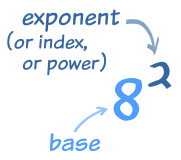Welcome to Mathcabulary!!
What
is Mathcabulary? It is a series of words and terms frequented in MATH 217 (or Pre-Algebra). Let's talk about what you're going to expect here.
As solemnly sworn, I created a vocabulary mosh-pit for basic math students at Butte Community College (or students anywhere!) Accessing Mathcabulary will give you access to words like "integer" or "product," words that will end up on quizzes, tests and homework. These are words all students should understand before charging into higher math.
This is me, Nike.

I created Mathcabulary because of a very bad experience. One summer, I took this very class while I was seeing multiple doctors who were all oblivious and ignorant toward my medical condition, which is autoimmune. One particular doctor took me off of my anxiety medication and replaced it with an antidepressant, even though I don't have clinical (or non-clinical)depression. While taking said pills, I forgot all of the things I learned in MATH 217, and even permanently lost a portion of my life, unable to remember anything, all because of a 10 minute visit to a bad doctor. Now, I take doctors and medication
very seriously, and I take my studies seriously as well. Mathcabulary will ensure that students have somewhere to go when they forget what "greater than" means. This is a tool that would have helped me, and I know it will help others.
FINDING WORDS AND TERMS
It's okay if you're looking for a word and you aren't computer-savvy. Here's the magic code: Ctrl+F. If you press "control" and "F" at the same time, a search bar will pop up in the upper right hand corner of the page. Type in a specific word, like "substitution" and the page will take you to the word you typed which will be highlighted. You can also use this tool to search for a general topic; if you want to know random, helpful things about multiplication, Ctrl+F "multiplication" and the page might take you to several things involving multiplying. **If you can't find the word you're searching for, check to see if the word is located in a different month's vocab: on the blog's upper right hand corner under "About Me," there is a BLOG ARCHIVE where you can click and scroll down to different months, which will have different words.
This should do the trick. But if the term you want isn't on my blog and you'd like an explanation, email me and I'll put it up ASAP!
ALT Codes
An ALT code is a code that allows you to use math symbols not found on a standard keyboard. For example, check out this awesome division sign ÷ or how I can type ¼ instead of a giant 1/4.
Here is the link: http://usefulshortcuts.com/alt-codes/instructions-for-using-alt-Codes.php
But remember, I don't condone doing homework via Microsoft Word or Open Office as fun as using these codes may be. I just want to share this tool. Homework is a paper thing, so if you print out your homework and turn it into Tamsen (or whomever your teacher is) and say "Nike taught me this!" I will deny it and link your teacher to this testimony. Booyah.
Get More Help With Basic Math
Workshops are held all the time in the CAS! These are 50 minute sessions where you go into a room and learn about math you've frequently studied. This is extraordinarily helpful for MATH 217 students, because it's like doing a review of everything you just covered in class. The tutor will answer all of your questions regarding math, and you will practice on worksheets, on the board, alone and with others.
Need help finding this awesome tutoring shizznit? First, ask your teacher for a leaflet with the times the sessions happen. Find a time that works for you. Directions? Go to the Learning Resource Center (LRC) located across from the science building, and sandwiched in between the gardening/welding section and the MC/library part of campus. Go up to the second floor. To the right is the CAS, or Center for Academic Success. Ask about their tutoring sessions for MATH 217. The person at the desk will log your student ID number into the computer, so have that ready. Then they will direct you to the room where you'll be.
Please, make sure to sign up for CAS as a class. This is
SUPER DUPER IMPORTANT okay? You sign up online like you did for your other classes; you add the class to your list of other classes, and
yes it's FREE. It will look like this: EDUC 310 - Supervised Tutoring (M3287). Signing up is important because it logs you, as a student, into the system, and if students keep signing up for the free and awesome tutoring CAS provides, The Man will keep paying for it, and we can keep CAS open.
CONTACT ME BABY!
Remember, anyone who wants to be a part of this blog to help
absolutely can! If you have a better definition, some links, cute math pictures, great examples, adorable math jokes, or anything helpful you want to share, please email me and I'll do my best to put your stuff up. Also, if a problem is wrong, or you think something could be better, tell me and I'll check it out and fix it, if it needs fixing.
Questions, comments, concerns and creativity go to: artfromnike@gmail.com
After
suming it all up, again I say welcome to Mathcabulary. It will be
exponentially fun.







